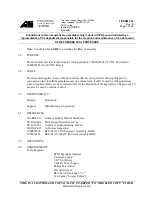
7 PICOSCALE CONTROL GUI
new panel. The more tiles you
select, the smaller the individual plots will be as the pattern will be
scaled to the window. You may also want to name the new panel appropriately.
7.6.2 Setting up a data receiver
Each empty plot panel contains a
Configure
button that opens a
Receiver Settings
window shown in
fi
gure 7.22.
Figure 7.22: Plot con
fi
guration.
The drop-down menu
Receiver Type
allows to select the di
ff
erent data streams that can be pro-
cessed and displayed. There are several types of data output possible:
•
Timeplot
A single plot window is shown plotting the data source(s) on the y axis over time
on the x axis.
•
Timeplot (Stacked)
Several timeplots (one per data source) are stacked over each other.
•
XY Graph
The XY graph requires two inputs. The
fi
rst stream is used for the x axis and the
second stream for the y axis. A Lissajous
fi
gure can be plotted using the data sources Sw
and S2w.
•
Numeric
A numeric output of the data stream.
•
FFT (Power Spectrum)
The power spectrum (
PS
) of one data source is calculated. You may
change to linear scaling (taking the square-root) of the power spectrum to display the am-
plitude spectrum (
AS
). Changing between PS and AS can be done be right-clicking into the
plot and selecting the appropriate scaling in the
Spectrum Scaling
selector. Units:
I
f you, for
example, calculate the PS of a
position
data source, the unit will be
m
2
.
I
f you calculate the
AS of a
position
data source, the unit will be
m
.
•
FFT (Power Spectral Density)
The power spectral density (
PSD
) of one data source is cal-
culated, which is the power spectrum scaled by the noise equivalent bandwidth. The user
may change to linear scaling (taking the square-root) of the power spectral to display the
amplitude spectral density (
ASD
). Changing between PS and AS can be done be right-clicking
into the plot and selecting the appropriate scaling in the
Spectrum Scaling
selector. Units:
I
f
you, for example, calculate the PSD of a
position
data source, the unit will be
m
2
/Hz
.
I
f you
calculate the ASD of a
position
data source, the unit will be
m/sqrtHz
.
72
PicoScale User Manual
Содержание PICOSCALE
Страница 1: ...PICOSCALE USER MANUAL www smaract com...









































